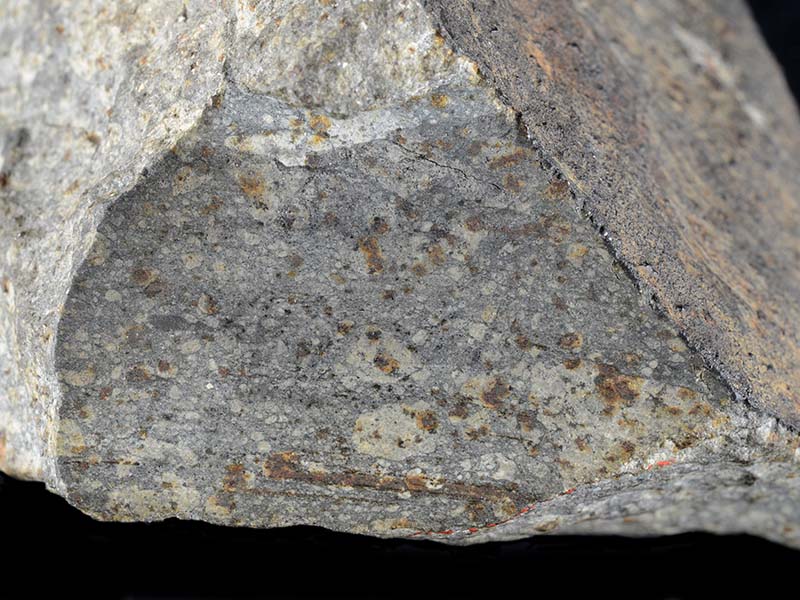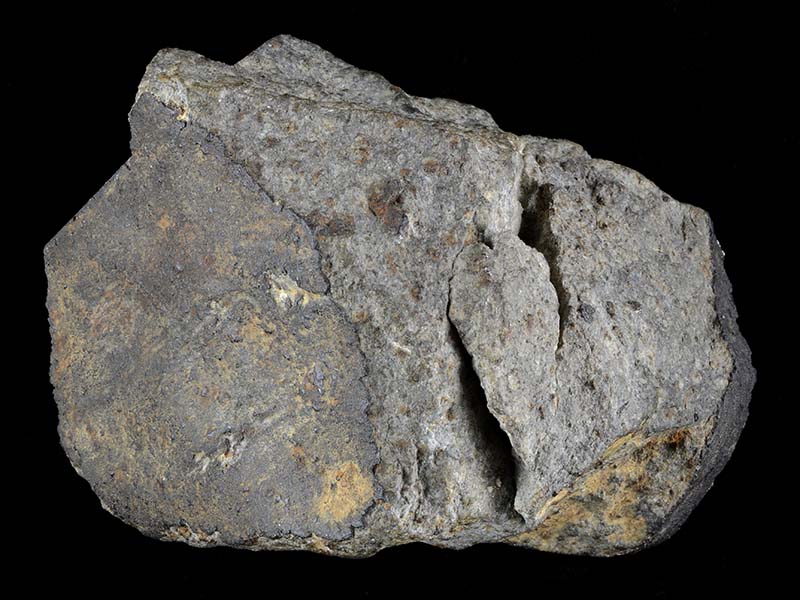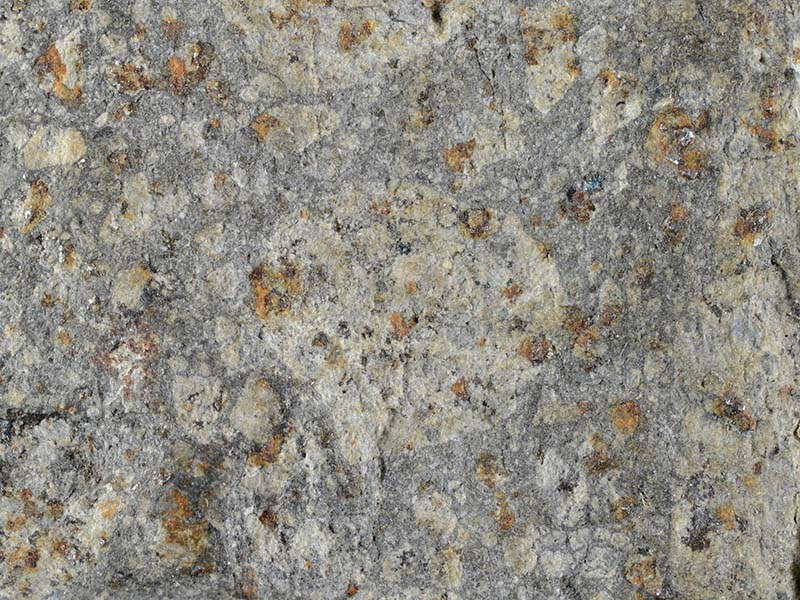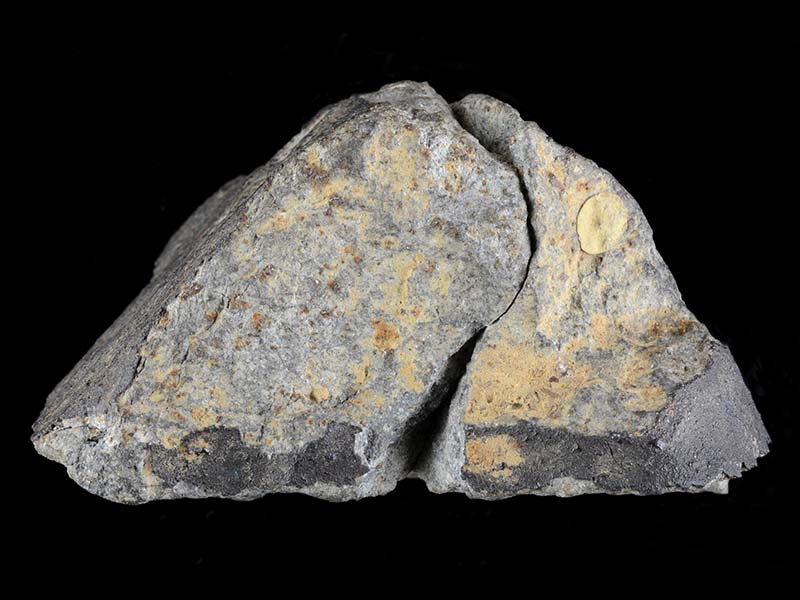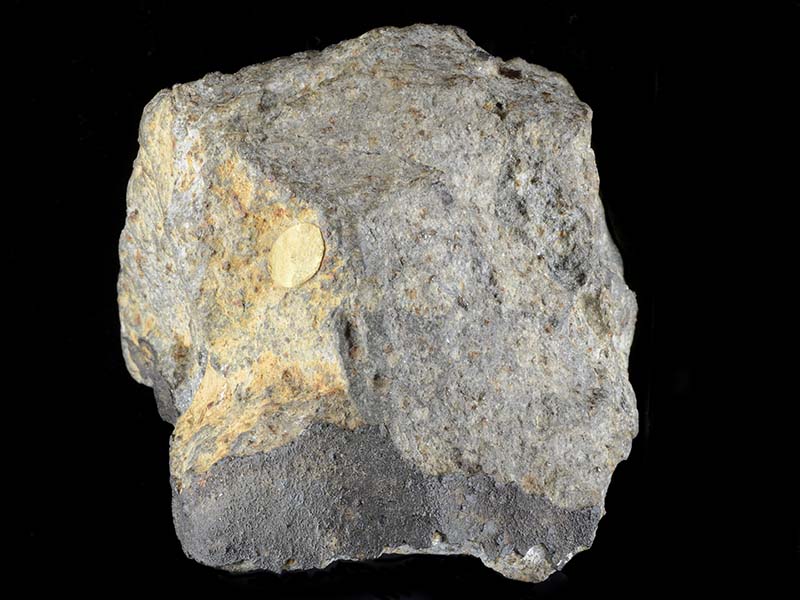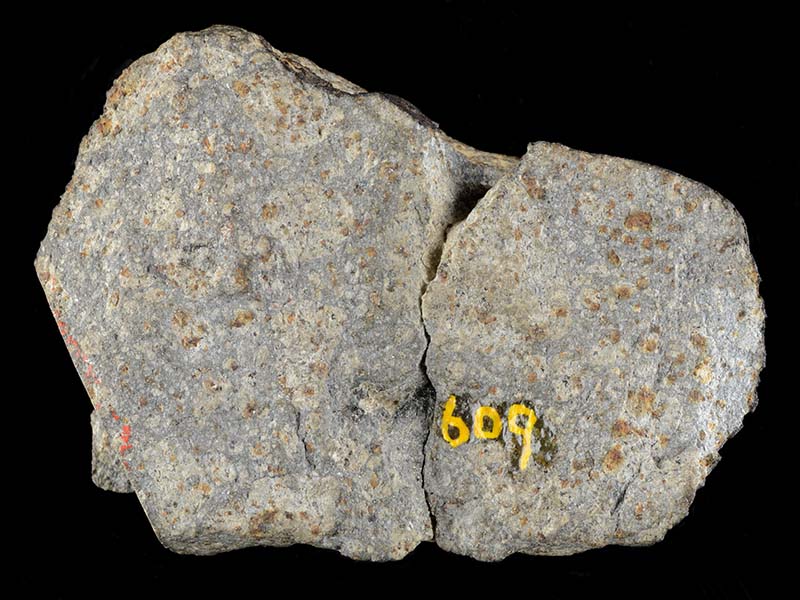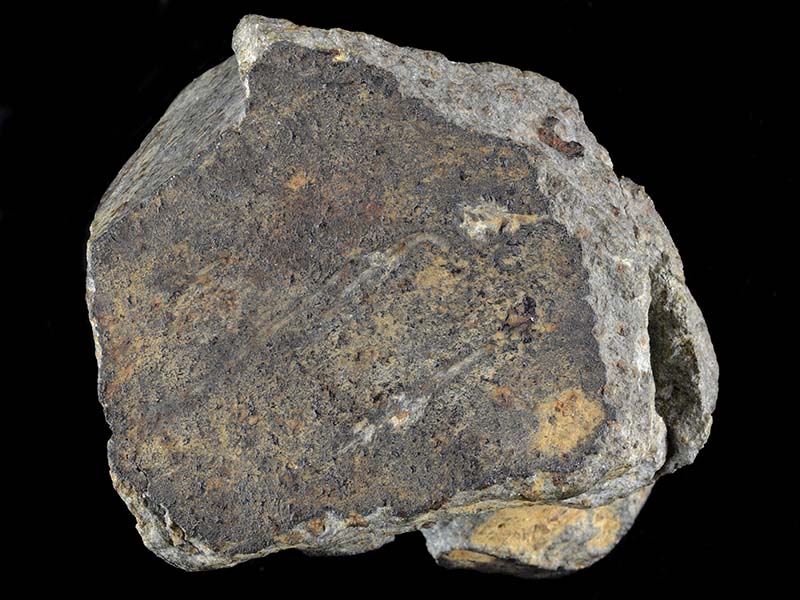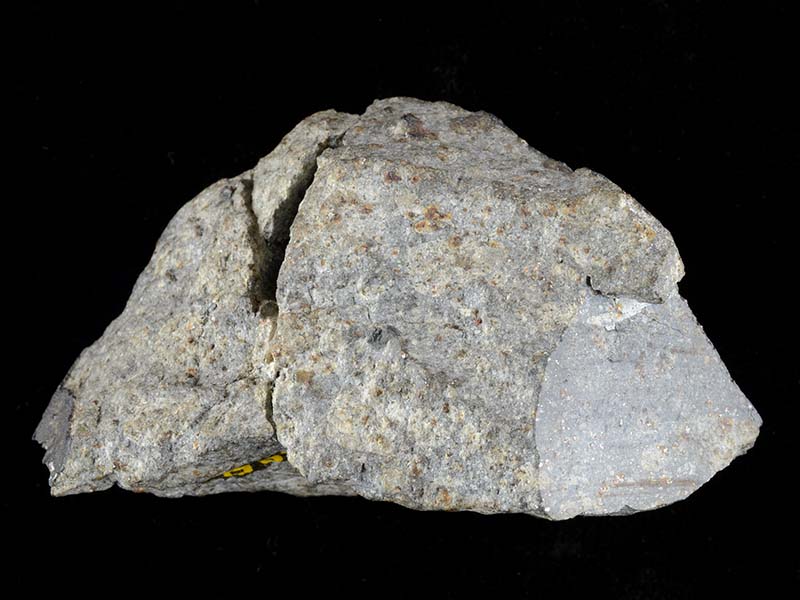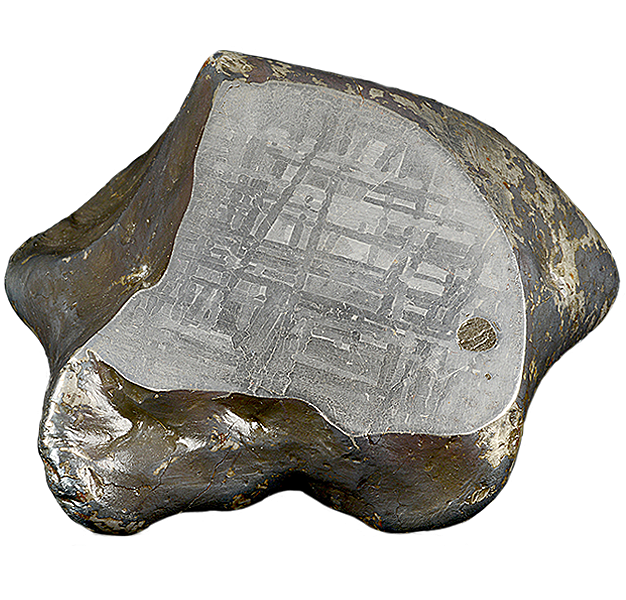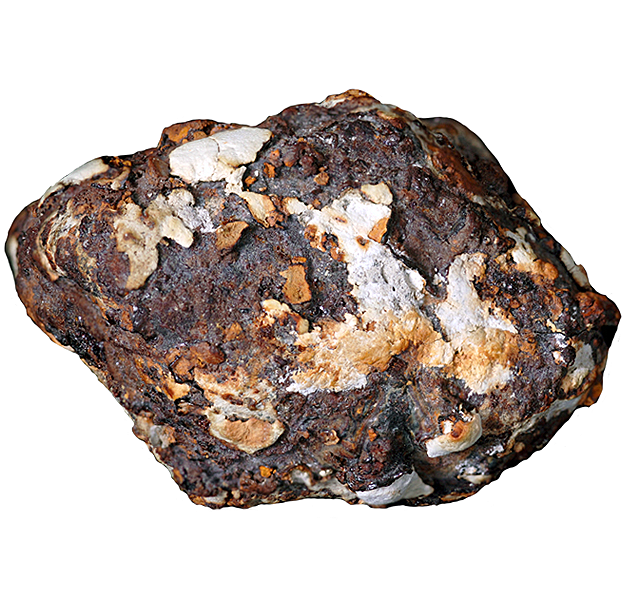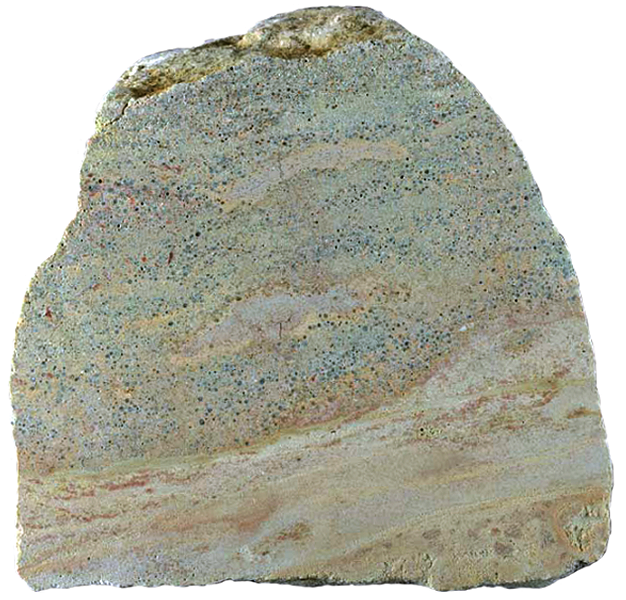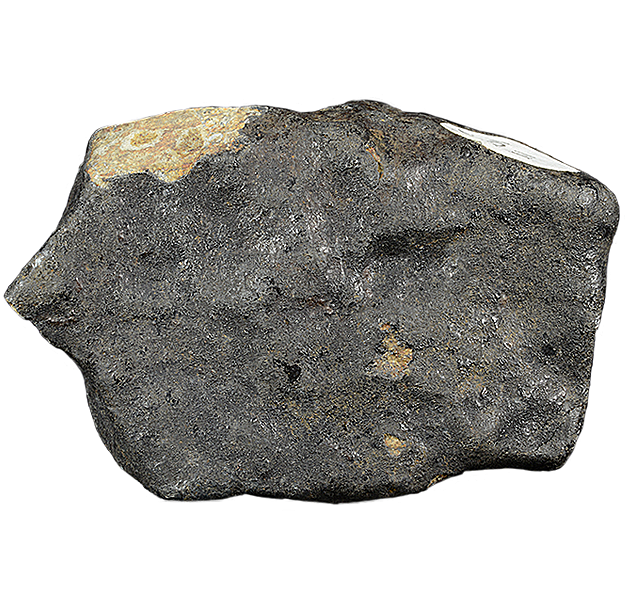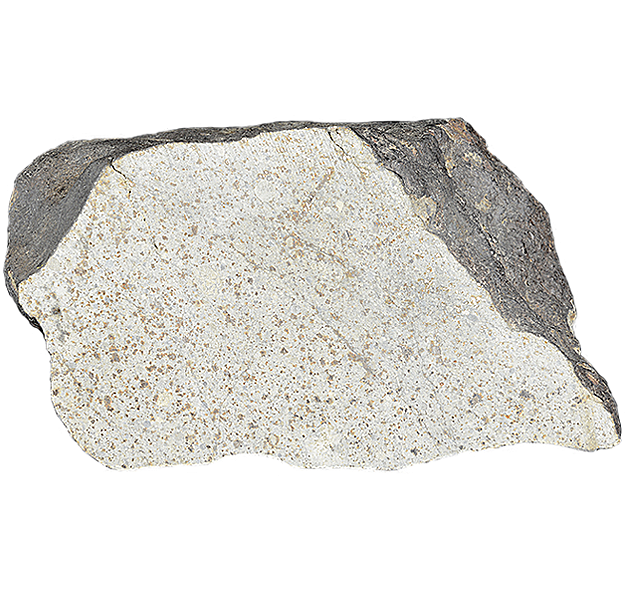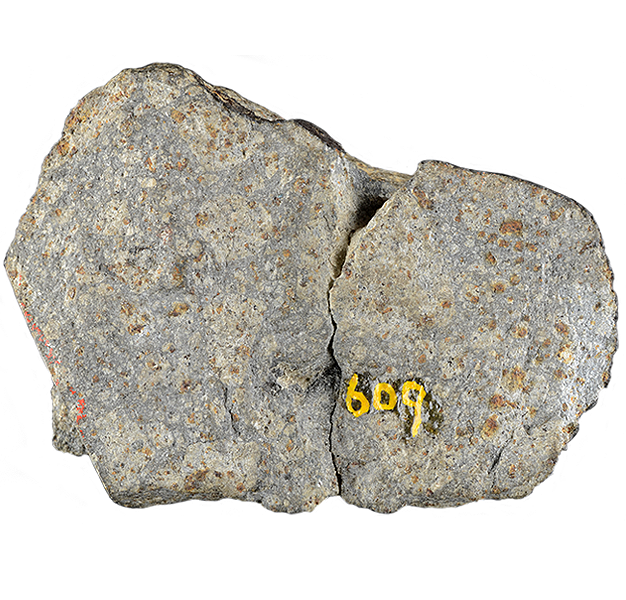
Fact sheet
The Mooresfort meteorite is a H5 chondrite that fell near Cashel, County Tipperary, Ireland in August 1810. Its total mass is 3.52 kg. Sedgwick Museum holds three hand specimens (A: 231.50 gm, B: 127.50 gm and C: 93.95 gm), some small fragments (total 4.00 gm) and three polished mounts.
The Mooresfort meteorite is classified as an H5 chondritic meteorite, meaning it has a high iron content (12-21%) and distinct chondrules (olivine and pyroxene mainly). In thin section both rotations show chondrules, although at low magnification the dark nature of the section makes these difficult to see. Chondrules are thought to have formed from the condensation of hot gases in the solar system around 4.6 billion years ago. The reflected light view is dominated with metallic iron (silvery grey) and a lesser amount of troilite (golden yellow).
See also:
http://www.bimsociety.org/bim3.shtml
http://www.lpi.usra.edu/meteor/metbull.php?code=14652
Specimen: Sedgwick Museum
Thin section: Sedgwick Museum
This Collection consists of meteorites that have fallen in Great Britain and Ireland and which are now preserved in museum collections. We have also included samples of the two known meteorite impact deposits in the UK.
The Natural History Museum in London offers more information about meteorites and meteorite categories; there is more information about its meteorite collections here.
